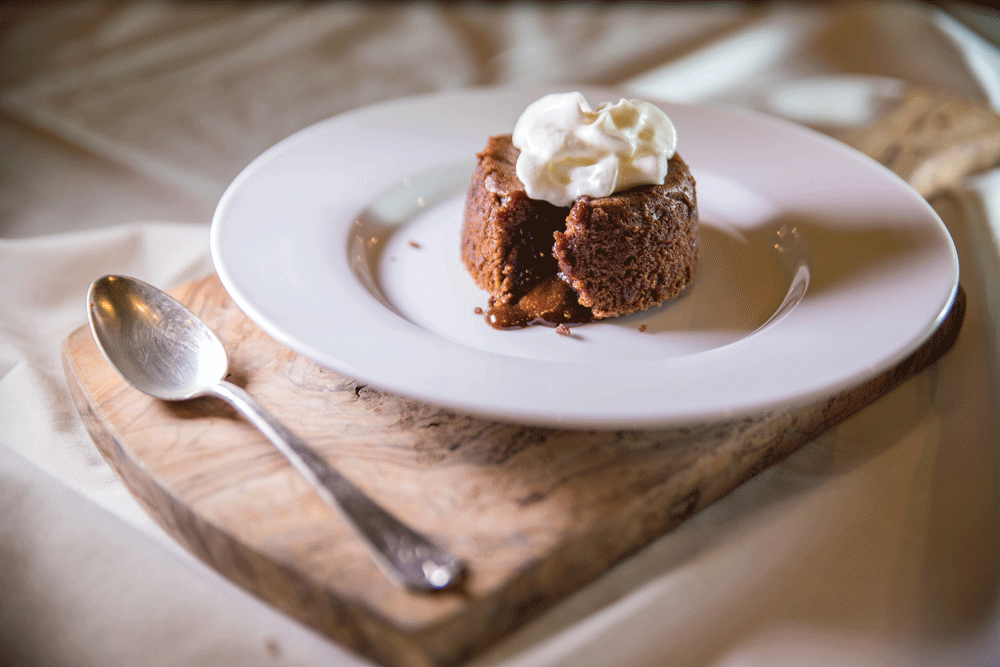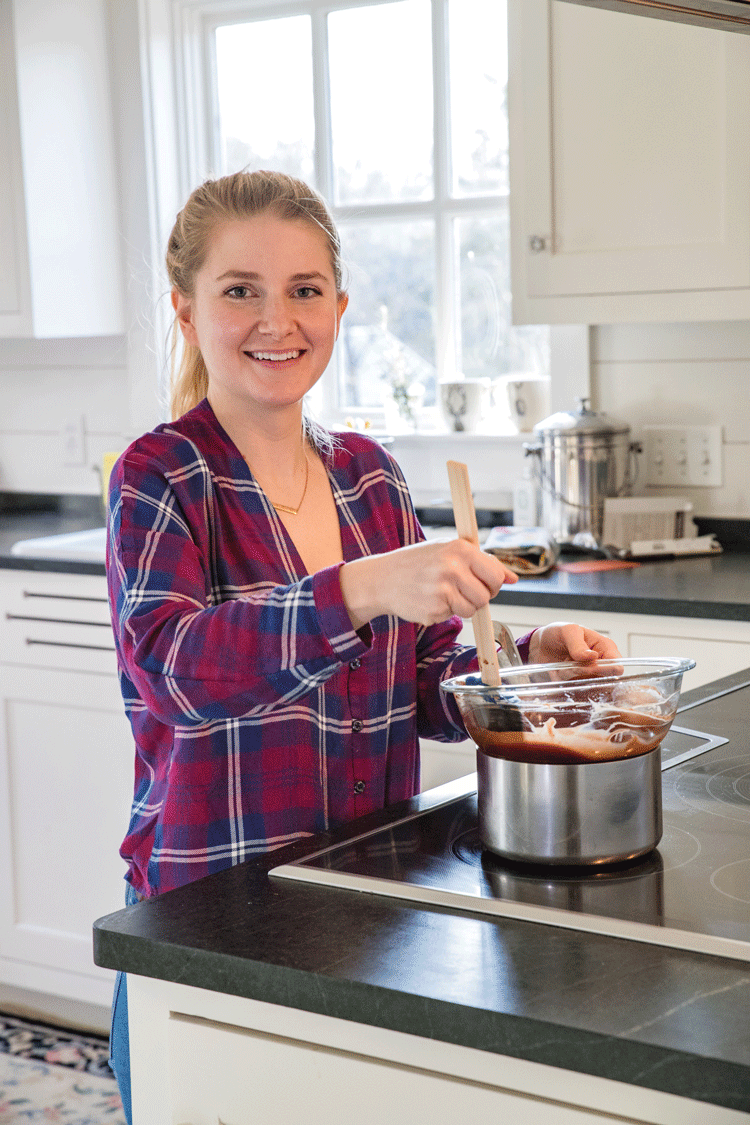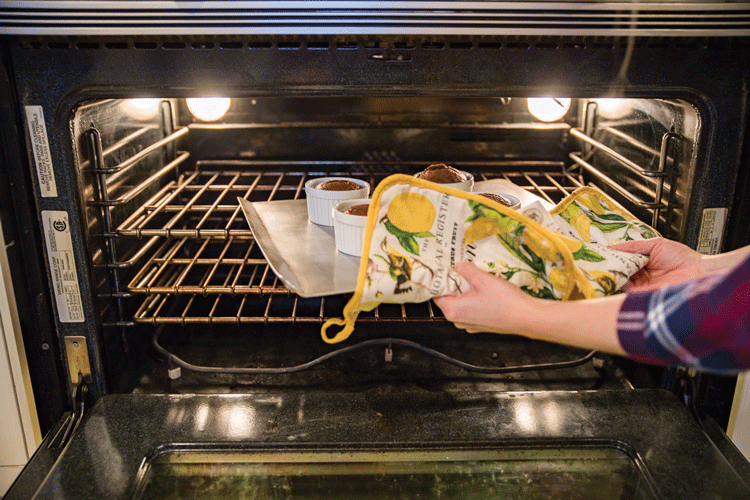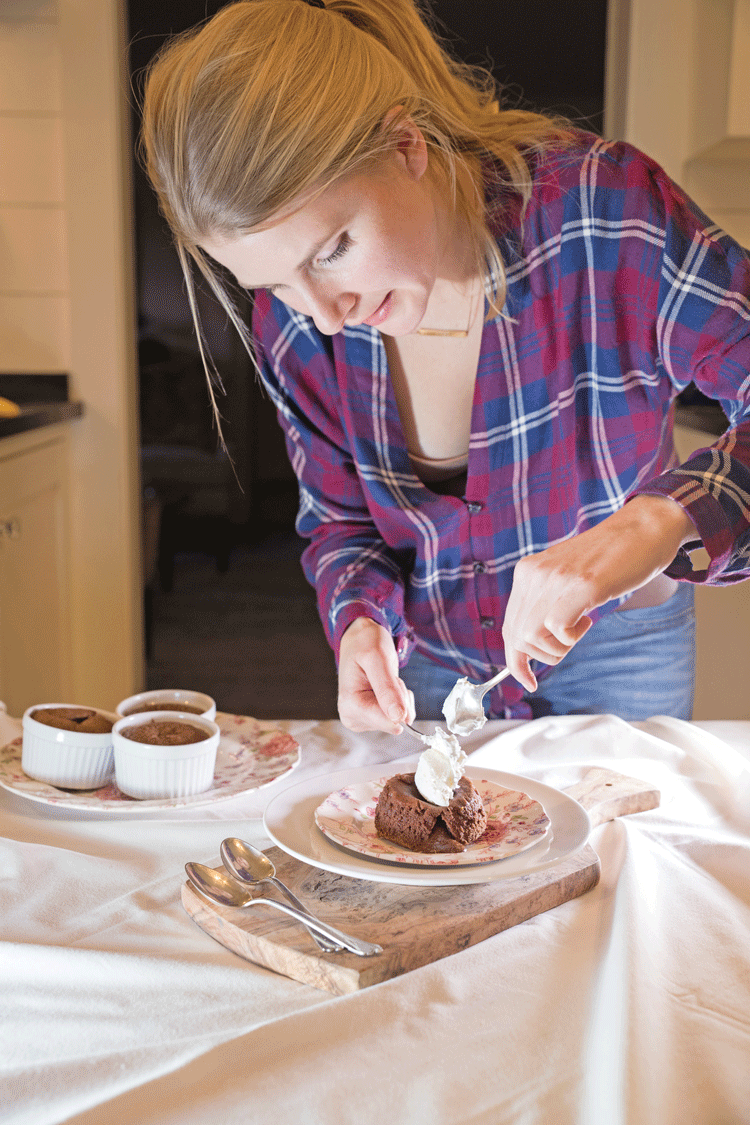Chocolate Cakes for a Changing Holiday

By Kaitlin Hill
Photos by Callie Broaddus
From the ancient Roman celebration of Lupercalia to today’s Hallmark-fueled love frenzy, Valentine’s Day traditions are always changing, but chocolate is here to stay. Make my Molten Chocolate Cakes this holiday, and you’ll see why.

In its earliest form, Valentine’s Day was known by the ancient Romans as Lupercalia. The mid-February Pagan party was the festival of fertility. Far from swapping cards or making dinner reservations, the Romans celebrated with drunken excess, nudity and sacrifice. Holiday history paints a passionate picture but perhaps doesn’t evoke the roses and candy hearts we think of today.

The transition from sacrificial to sweet began in the 5th century when Pope Gelasius rechristened the holiday “St. Valentine’s Day” and tried to expel some of the more exhibitionist Pagan practices. As historian Noel Lenski, then with the University of Colorado at Boulder, put it in a 2011 interview with NPR, “It was a little more of a drunken revel, but the Christians put clothes back on it. That didn’t stop it from being a day of fertility and love.” Gelasius chose the name St. Valentine after the third-century Roman saint synonymous with courtly love. In life, St. Valentine was a local hero, and in death he was a martyr praised for secretly marrying young couples even though it was prohibited at the time. It is even believed that before his death St. Valentine signed a letter, “from your Valentine.” Sound familiar?
Centuries later, Shakespeare and Chaucer continued the shift by romanticizing Valentine’s Day in their writings. Chaucer refers to “Saynt Valentyn” in his poem, “The Parliament of Foules,” noting it’s the special day when birds choose their mates. This new, more sentimental version of Valentine’s Day became hugely popular and, in time, an excuse to eat chocolate.

While love notes and flowers have been given as tokens of affection longer than there have been lords and ladies, chocolate came into the gift game a little later. Some historians believe that chocolate became a Valentine’s Day staple in the 1840s, when Richard Cadbury developed “eating chocolate,” a product of the coco butter left over from the already popular “drinking chocolate.” Seizing a business opportunity, he packaged his chocolates in hand-decorated boxes and sold them as gifts. Cadbury is even rumored to have made the first heart-shaped chocolate box, a Valentine’s Day icon.
In 2009, Nielsen’s, a global data analytics company, reported $345 million in chocolate sales on Valentine’s Day. Whether it’s simply the desire to give something sweet to someone sweet or because of its aphrodisiac qualities, some form of chocolate is a Valentine’s Day tradition that is sticking around.
One of the most popular chocolate variations on Valentine’s Day in modern times is the Molten Chocolate Cake. This cross between a soufflé and flourless chocolate cake first appeared in American restaurants in the 1980s. Celebrity chef Jean-Georges Vongerichten claims to have invented it in 1987 in New York, although celebrated French pastry chef and chocolatier Jacques Torres argues the dessert already existed in France long before Vongerichten started serving it. Either way, it’s become a classic in high-end restaurants across the country and a favorite dessert of couples on Valentine’s Day.

Prized for its rich taste and oozing chocolate center, the cake is a treat often left to the professionals. But you don’t have to shell out at a fancy restaurant to enjoy it. You can avoid the February 14th reservation rush and make this decadent treat at home. Whether you’re celebrating Valentine’s Day with your significant other or a group of close friends or taking inspiration from the Romans with a bit more extravagance, indulge in this easy but elegant dessert that will make all who eat it feel warm and gooey inside. My recipe for Molten Chocolate Cakes couldn’t be more straightforward, but it tastes like Vongerichten made it himself. Follow the recipe below, and impress your loved ones with this new Valentine’s Day tradition. I think the ancient Romans would approve.

Molten Chocolate Cakes:
Makes 6, 4-ounce ramekins
Ingredients:
2/3 cup butter, cut into cubes
4 ounces bittersweet chocolate, chopped
1/4 teaspoon salt
1/4 teaspoon instant coffee powder
4 eggs
2/3 cup sugar
1/2 cup flour
Directions:
Butter six ramekins. Lay a circle of parchment in the bottom of each ramekin, and butter the parchment.
Set aside.
Place cubed butter, chopped chocolate, salt and coffee in a medium-sized bowl. Place the bowl over a saucepot of simmering water, and melt the chocolate and butter, stirring until smooth. Once the chocolate and butter have melted, set the mixture aside to cool slightly.
Place the eggs and sugar in a large bowl. Using a hand mixer, beat the eggs and sugar until they are pale and thick. When scooped, the egg mixture should make “ribbons” and fall back on itself.
Add the flour to the egg and sugar, and mix in until incorporated.
Next, stir in the melted chocolate and mix until the batter is one
smooth consistency.
Scoop the batter into the prepared ramekins, filling nearly to the top,
leaving about 1/4 inch of clearance.
Refrigerate for at least 30 minutes.
When you are ready to serve, preheat oven to 400° F.
Remove ramekins from the fridge and place on a cookie tray. Transfer to the preheated oven and bake for 15
minutes until the tops are just set and the insides are still very gooey. Remove from oven, and let sit for five minutes before turning out onto
a plate.
If they need help getting out, carefully run a knife around the edges before flipping.
Dust with powdered sugar or top with whipped cream for an elegant end to a
romantic evening. ML


